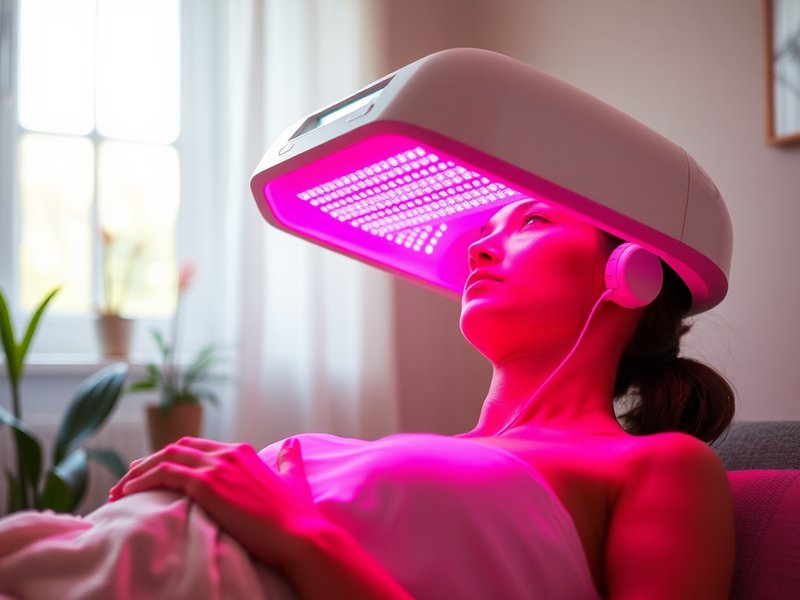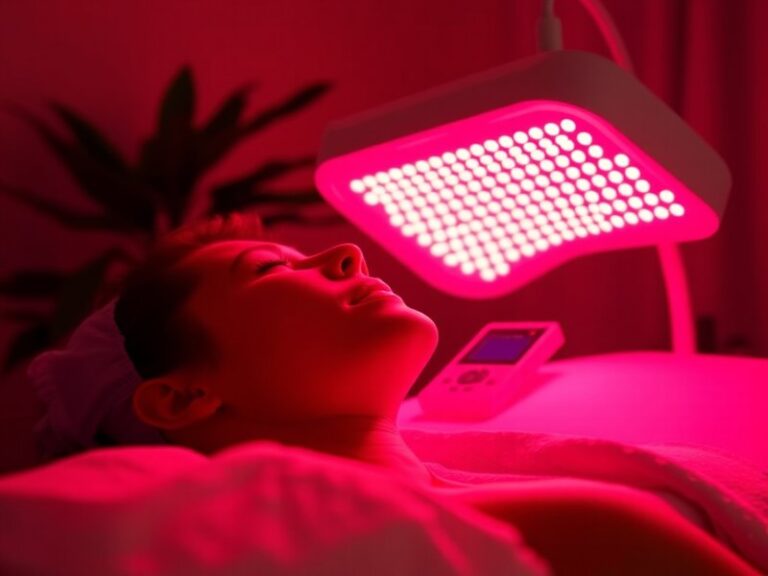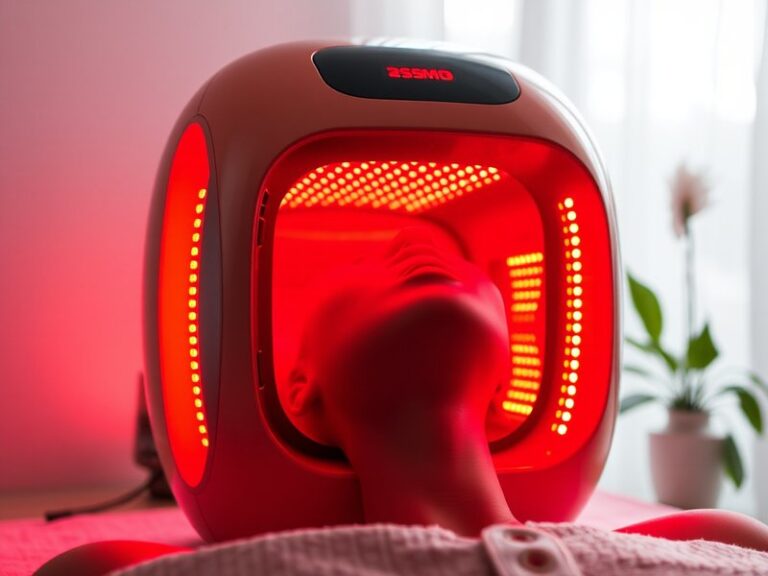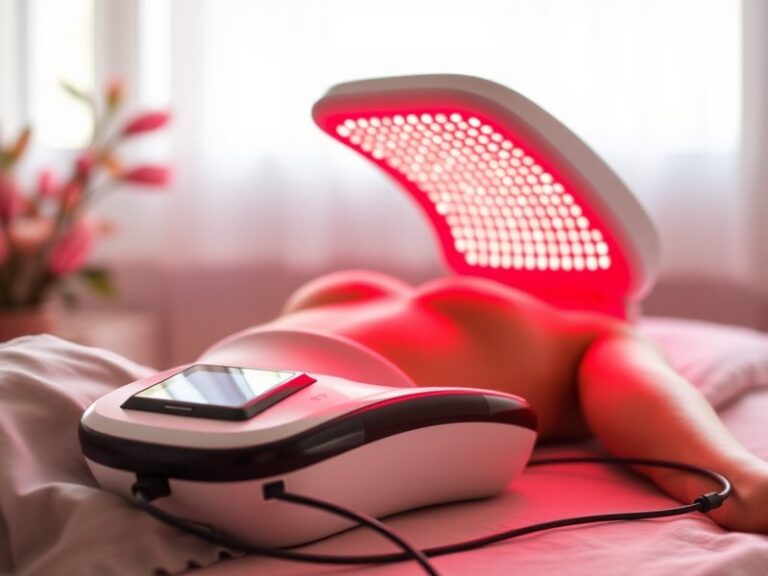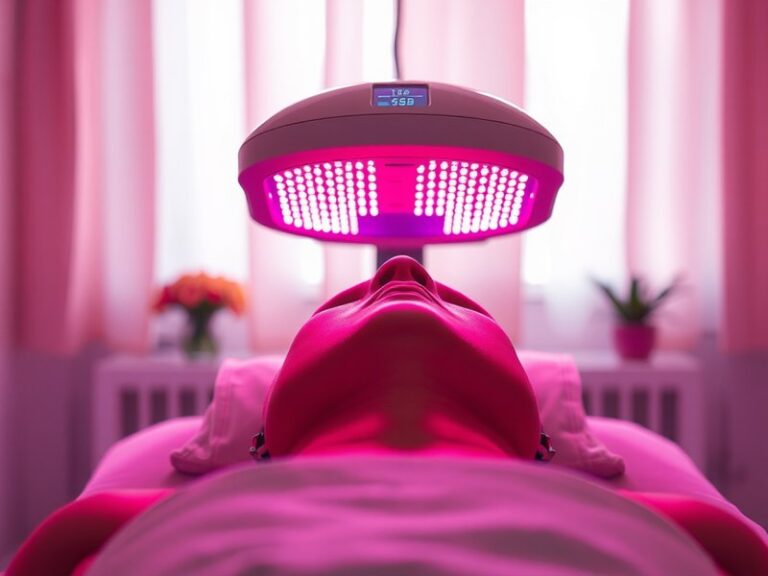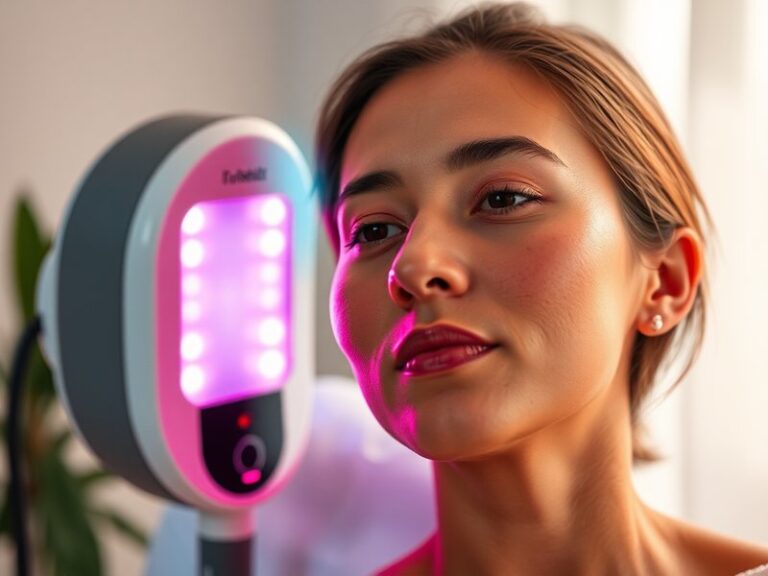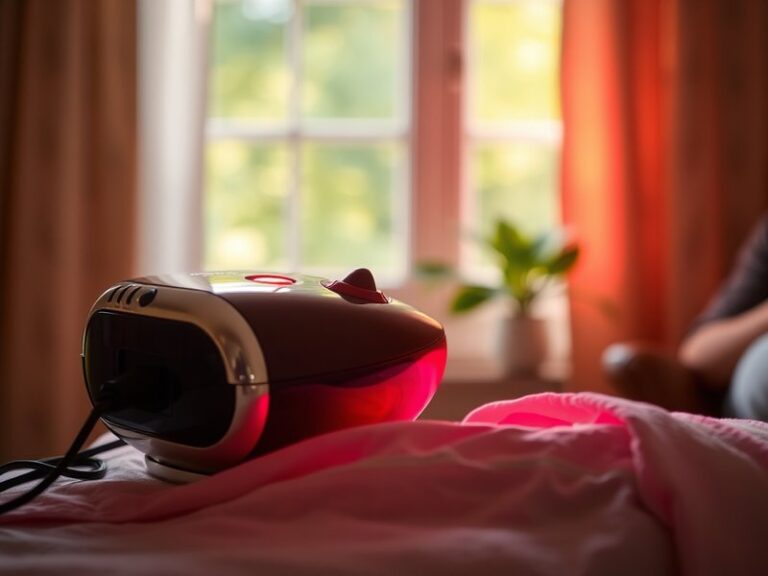Does Red Light Therapy Give Off Radiation?
Does Red Light Therapy Give Off Radiation?
Is red light therapy safe, and does it emit any form of harmful radiation?
This article will explore the nature of red light therapy, its potential benefits, considerations regarding its safety, and how it compares to other therapeutic options. Understanding these aspects will help you make informed decisions regarding its use.
Key Takeaways
- Red light therapy uses non-ionizing radiation, which is considered safe and does not pose the same health risks as ionizing radiation.
- Many studies suggest potential benefits of red light therapy, including reduced inflammation, improved skin health, and enhanced recovery.
- It is important to consult healthcare professionals before starting red light therapy, especially for those with certain medical conditions or concerns.
What is Red Light Therapy?
Red light therapy (RLT) is a treatment that utilizes low-level wavelengths of red or near-infrared light to stimulate cellular processes within the body. This form of therapy is recognized for its non-invasive nature and is often used in dermatology, physical therapy, and wellness treatments.
Unlike traditional forms of light therapy, red light therapy specifically utilizes wavelengths ranging from 600 to 660 nanometers, which penetrate the skin and trigger various biological processes. The goal of RLT is to enhance healing, reduce pain, and rejuvenate the skin, making it an appealing option for many users.
What are the Benefits of Red Light Therapy?
Red light therapy offers a plethora of benefits, many of which are supported by clinical evidence. Here we will discuss some prominent advantages.
Enhanced Skin Health
RLT can improve the appearance of the skin by promoting collagen production, which reduces wrinkles and fine lines. It may also aid in the treatment of acne by reducing inflammation and promoting healing.
Pain Relief and Reduced Inflammation
Studies have shown that red light therapy can relieve chronic pain conditions such as arthritis, muscle strains, and joint pain. The therapy helps by reducing inflammation and promoting blood circulation, facilitating faster recovery.
See why in Can Red Light Therapy Plump Lips?
Faster Recovery for Athletes
Athletes often utilize RLT to expedite muscle recovery post-exercise. Research indicates that regular use of red light therapy can shorten recovery time and enhance athletic performance by improving muscle recovery rates.
Mood and Sleep Improvement
Emerging studies suggest that RLT may also positively affect mood and sleep patterns. By affecting melatonin levels and reducing symptoms of anxiety, it can contribute to overall well-being.
Is it Possible to Use Red Light Therapy Safely?
The safety of red light therapy is a major consideration for many potential users. RLT is widely regarded as safe when used correctly, primarily because it employs non-ionizing radiation, which does not carry the same risks associated with ionizing radiation (such as X-rays).
What are the Advantages of Using Red Light Therapy?
RLT presents several advantages that contribute to its growing popularity.
Non-Invasive and Painless
Unlike surgical or invasive treatments, red light therapy is non-invasive and generally painless, making it accessible for various demographic groups.
Minimal Side Effects
Most individuals experience no significant side effects when using RLT. Common reactions, such as mild warmth or redness at the site of treatment, are typically temporary.
Convenient Home Use
With advancements in technology, many devices are available for home use, providing convenience and flexibility in treatment schedules.
What are the Things to Consider Before Trying Red Light Therapy?
Before starting red light therapy, there are several important factors to consider.
Consultation with a Healthcare Professional
It’s wise to consult with a healthcare provider, especially if you have existing medical conditions or are taking medications that could interact with the therapy.
Understanding Device Quality
Not all red light therapy devices are created equal. Researching and choosing devices backed by scientific studies ensures you receive the most effective treatment.
Frequency and Duration of Treatment
Establishing a consistent treatment schedule is crucial for optimal results. Understanding the frequency and duration required for your specific condition will enhance the efficacy of RLT.
What are the Alternatives to Red Light Therapy?
Aside from red light therapy, several alternatives exist for addressing health and wellness needs.
LED Light Therapy
Similar to RLT, LED light therapy utilizes different colors and wavelengths of light to treat various skin conditions and promote healing, providing a versatile alternative.
Cryotherapy
This therapy involves exposing the body to extreme cold to stimulate recovery and reduce inflammation, suitable for athletes and individuals with chronic pain.
Check out the full post Is Excess Red Light Therapy Harmful?
Ultrasound Therapy
Ultrasound therapy, often used in physical therapy, employs sound waves to promote healing within tissues, making it an option for those seeking pain relief and recovery.
Conclusion: Is it Recommended to Use Red Light Therapy?
In conclusion, red light therapy appears to offer numerous potential benefits with a favorable safety profile. Its non-invasive nature, minimal side effects, and convenience of use make it an attractive option for many. However, as with any therapeutic approach, individuals should consult healthcare professionals to tailor treatments to their specific needs and circumstances.
Frequently Asked Questions
Does red light therapy emit harmful radiation?
No, red light therapy uses non-ionizing radiation, which is safe and does not carry the same risks as ionizing radiation.
How often should I undergo red light therapy?
The recommended frequency can vary based on personal health goals and conditions, but it is often suggested to start with 2-3 sessions per week.
Can I perform red light therapy at home?
Yes, multiple devices are designed for safe home use, allowing for convenience in therapy sessions.
Is red light therapy suitable for everyone?
While many can safely use RLT, individuals with certain medical conditions or medications should consult a healthcare professional first.
What are the main side effects of red light therapy?
Most individuals experience little to no side effects; however, some might notice mild redness or warmth at the treatment site, typically resolving quickly.
